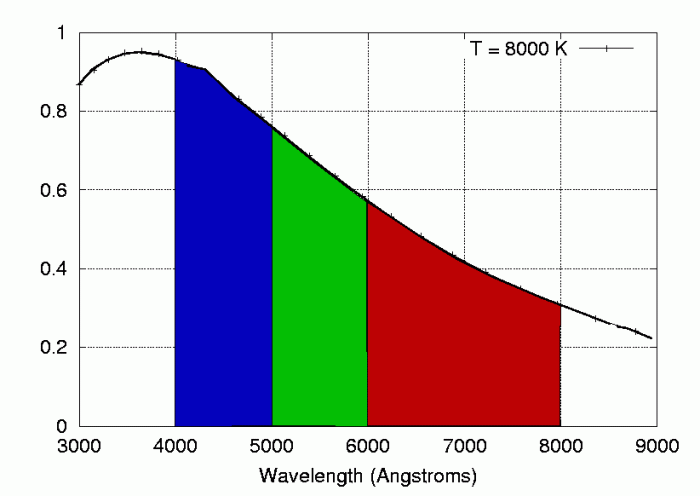The hertzsprung russell diagram answers – The Hertzsprung-Russell (H-R) diagram, a cornerstone of astrophysics, unveils the enigmatic tapestry of stars, revealing their intrinsic properties and evolutionary paths. This celestial map, a product of meticulous observation and theoretical insights, has revolutionized our understanding of the cosmos.
The H-R diagram, conceived independently by Ejnar Hertzsprung and Henry Norris Russell, plots the luminosity of stars against their surface temperature, creating a visual representation of their diverse characteristics. This diagram not only classifies stars but also serves as a powerful tool for deciphering their life cycles and unraveling the secrets of stellar evolution.
1. The Hertzsprung-Russell Diagram
An Overview

The Hertzsprung-Russell (H-R) diagram is a graphical representation of the relationship between the luminosity and temperature of stars. It is a fundamental tool in astrophysics, providing insights into the properties, evolution, and distribution of stars.
The H-R diagram was independently developed by Ejnar Hertzsprung and Henry Norris Russell in the early 20th century. It has since become one of the most important tools in astronomy, providing a visual representation of the diversity of stars and their evolutionary paths.
2. Key Features of the H-R Diagram
The H-R diagram is a two-dimensional plot, with the vertical axis representing the luminosity of stars (expressed in solar luminosities) and the horizontal axis representing the effective temperature (expressed in Kelvin). The diagram is divided into several regions, each corresponding to a different type of star.
The main regions of the H-R diagram are:
- Main sequence: A diagonal band running from the upper left to the lower right, containing most stars in the Milky Way. Main-sequence stars are fusing hydrogen in their cores and are in a state of hydrostatic equilibrium.
- Red giants: Located above and to the right of the main sequence, red giants are stars that have exhausted the hydrogen in their cores and are now fusing helium in their shells.
- White dwarfs: Located below and to the left of the main sequence, white dwarfs are the final evolutionary stage of low-mass stars. They are composed of carbon and oxygen and are no longer undergoing nuclear fusion.
- Supergiants: Located above and to the left of the main sequence, supergiants are massive stars that are fusing heavy elements in their cores.
- Neutron stars and black holes: Located below and to the left of the white dwarfs, neutron stars and black holes are the final evolutionary stages of massive stars. Neutron stars are composed of neutrons, while black holes are regions of spacetime with such intense gravity that nothing, not even light, can escape.
The H-R diagram shows a clear relationship between stellar luminosity, temperature, and spectral class. Stars with higher luminosities are hotter and have earlier spectral classes, while stars with lower luminosities are cooler and have later spectral classes.
3. Applications of the H-R Diagram
The H-R diagram is a powerful tool for astrophysicists, providing insights into the properties, evolution, and distribution of stars.
- Determining stellar properties: The H-R diagram can be used to determine the luminosity, temperature, and spectral class of stars. This information can then be used to estimate the mass, age, and evolutionary stage of stars.
- Understanding stellar evolution: The H-R diagram provides a visual representation of the evolutionary paths of stars. By studying the distribution of stars on the H-R diagram, astronomers can gain insights into the processes that drive stellar evolution.
- Astrophysics research: The H-R diagram is used in a wide range of astrophysics research, including studies of stellar populations, galactic structure, and cosmology.
4. Limitations of the H-R Diagram, The hertzsprung russell diagram answers
While the H-R diagram is a powerful tool, it has some limitations:
- Dependence on observable parameters: The H-R diagram is based on observable parameters, such as luminosity and temperature. This means that it can be difficult to place stars on the H-R diagram if these parameters are not known accurately.
- Interstellar extinction: Interstellar extinction can affect the observed luminosity of stars, making it difficult to place them on the H-R diagram accurately.
- Binary star systems: Binary star systems can be difficult to place on the H-R diagram because their combined luminosity and temperature may not be representative of either star individually.
5. Advanced Concepts in the H-R Diagram
In addition to the basic features described above, the H-R diagram can be used to explore more advanced concepts in astrophysics.
- Color-magnitude diagrams (CMDs): CMDs are similar to H-R diagrams, but they plot the absolute magnitude of stars instead of their luminosity. CMDs are often used to study star clusters and galaxies.
- Isochrones: Isochrones are lines on the H-R diagram that represent the evolutionary tracks of stars with different masses. Isochrones can be used to estimate the age of star clusters and galaxies.
- Exotic objects: The H-R diagram can be used to identify exotic objects, such as white dwarfs, neutron stars, and black holes. These objects have unique properties that can be seen on the H-R diagram.
Frequently Asked Questions: The Hertzsprung Russell Diagram Answers
What is the significance of the H-R diagram?
The H-R diagram provides a comprehensive view of stellar properties, enabling astronomers to classify stars based on their luminosity, temperature, and spectral class. It also serves as a tool for understanding stellar evolution and identifying exotic objects.
How does the H-R diagram help determine stellar properties?
The H-R diagram allows astronomers to estimate stellar mass, age, and evolutionary stage based on the star’s position on the diagram. It provides insights into the internal structure and energy production mechanisms of stars.
What are the limitations of the H-R diagram?
The H-R diagram is limited by its reliance on observable parameters, which can be affected by factors such as interstellar extinction. Additionally, binary star systems and certain types of variable stars can complicate the interpretation of the diagram.

